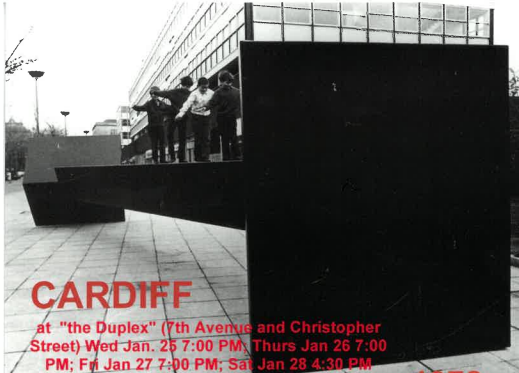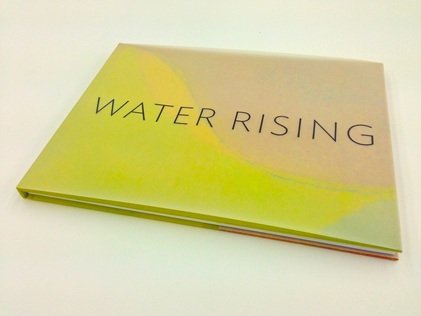Books
Buy the Book:
A Family Place: A Hudson Valley Farm, Three Centuries, Five Wars, One Family
Viking 2001, Penguin 2002, SUNY Excelsior 2009
Winner of the Victorian Society Book Award
Winner of the Documentation of American Life Award
About the Book
In this luminous memoir, award-wining author Leila Philip tells the story of her ancestral Hudson River home, Talavera, the mystery of her attachment to it, and her search to come to terms with the truth about her family's three-century history there. After her father's death in 1992, Philip and her family struggled to find the means to keep Talavera intact. This uphill battle led her to examine the forces that compel a family to sacrifice almost everything to hold on to a piece of land. In a historical quest both surprising and engaging, Philip addresses the tensions between memory and recorded fact and invites readers to take a new look at their own sense of home.
Praise For
“… an unpretentious, subtly shaded story of the importance of understanding the ghosts and heroes that reside in every ancestral home.”
–New York Times
“An exquisite rendering of a Hudson Valley family farm, as detailed and colored as a Persian miniature. Philip’s family history is alarmingly transporting, and her sense of place so rich you can taste it.”
–Kirkus
“Mesmerizing…Both narrative threads are profoundly personal. Braided together with insight, they pay homage to the ideals of home and family with a resonance that should extend beyond her home region.”
–Publisher’s Weekly
“Philip grafts history, natural history, and autobiography into a stunning performance.”
–Marueen Howard
Buy the Book:
The Road Through Miyama
Random House 1989, Vintage 1991, 1992
Winner of the PEN 1990 Martha Albrand Citation for Nonfiction
About the Book
In 1983 Leila Philip made her way to southernmost Japan in search of a potter who would take on a foreign apprentice. In Miyama–a village settled almost four centuries ago by seventy Korean potters–she was accepted as an apprentice into the workshop and home of master potter Kazy Nagayoshi and his wife, Reiko.
As she tells us of her progress in the poetry workshop, Philip gives us an insightful guide to an exacting craft, a deeply personal portrait of the village, and a beautifully perceptive look at the cultural roots of modern Japan. With good humor and vivid detail, she tells of days spent planting and harvesting rice in the paddies. And with grace and respect, she introduces us to the people of Miyama–to the feisty old farming woman, to the artisans from neighboring studios, and, most especially, to Nagayoshi and Reiko.
Praise for
“A charming mix, and an unusual look at pottery lore and technique, and at a modern aspirations and traditional attitudes in Japanese life.”
–Kirkus
“In this enchanting book, Philip recounts her trip with sensitivity and clarity. The reader will learn much about potting, but also about Japanese history, social mores, rural life, modern youth, religion and much else.”
–Library Journal
“I found Leila Philip's book The Road Through Miyama an entirely authentic and fascinating glimpse into one of the more unusual crannies of Japanese society... As perceptive and evocative as Japanese haiku and delightful to read.”
–Edwin O. Reischauer
“An unusually sharp observer and graceful writer, Leila Philip has brought to life a part of Japan that will be a revelation even to most Japanese readers... a charming debut by a gifted writer.”
–James Fallows
“A lovely memoir of Philip's apprenticeship to a master potter in Japan, as well as a gentle and generous portrait of village life... as delicate and full of grace as a Japanese tea cup.”
-Gretel Ehrlich
Buy the Book:
Hidden Dialogue: A Discussion Between Women in Japan and the United States
U.S. Japan Program Series, New York Japan Society, 1992
Hidden Dialogue examines the evolving roles of women in Japan and the implications for Japanese society.
About the Book
Women in Japan and the United States have always been in a dialogue, albeit silent one. Here in the United States, cultural stereotypes of Japanese women- Madame Butterfly or the alluring geisha- have been held up as models of female submissiveness. As Japan's role as economic competitor has grown, this stereotype has transformed into that of the household drudge, a reminder and warning to American women that they should stop complaining and appreciate how much beter off they are. In Japan, the stereotype of the American woman has served and equally ambivalent role. In the late '60s and '70s, Japanese mass media quickly caricatured the Wester feminist as a sex-deprived siren. And the contemporary American career woman, while attractive and bold, is routinely depicted as lonely and miserable, a ruthless competitor of men and destroyer of the family.
Recently, this dialogue of stereotypes became a dialogue of voices. At the Japan Society's "Women's Agenda for the '90s" conference held in Tarrytown, New York in June 1992, professional women from Japan and the United States had an opportunity to discuss what was on their minds. For almost two days, businesswomen and lawyers, policymakers and politicians, journalists and research analysts discussed their concerns as women leaders. They exchanged information on the current situation for women in both countries and compared strategies for change. Most important, they began to talk, to exchange stories and anecdotes and, through this process, to discover how fragile the differences between them really are.
Learn More:
Water Rising
New Rivers Press, 2015
About the Book
Water Rising is a unique collaboration between Leila Philip and sculptor, Garth Evans. It combines Evan's watercolors and Philip's poems, bound together in a critically acclaimed art book, and has evolved and grown as a project to include music, spoken word, video installation, and many events across the country and around the world.
The project has an environmental mission, and 100% of net proceeds are being donated to generate support for environmental stewardship through groups like 1000 Friends of Oregon, CT Audubon, and Scenic Hudson.
Praise For
Leila Philip's poems are intricately accurate about the look and sound of natural things, the grand sweep of the seasons, and the elusively textured emotions that unite two people in a single enterprise. She is a particularly subtle kind of realist. Garth Evans, a non-figurative sculptor, is seen here as a watercolorist transposing the grand forms of his three-dimensional work to the flatness of paper. Her representations and his abstractions do not, at first glance, seem to have much to do with one another. With attentive reading and looking, however, we begin to perceive in his imagery intimations of specific things--qualities of light, shifting structures of space--and, in hers, openings onto vast, unnamable matters of hope and the flow of time. Each is as much an abstractionist or a realist as the other, and Water Rising joins their work in a magnificent unity.
-Carter Ratcliff, Art in America
In this exquisite collection, Water Rising, the sublime watercolors of Garth Evans and the lyrical meditations of Leila Philip reflect those tides that rise and course within our lives and through the natural world, in both cases tracing the indelible watermarks that have been left behind. Whether grounded in our intimate daily experience or our artistic hopes and desires, the paintings and poems of Water Rising celebrate our insistence that, in the face of much darkness, we will continue to live along the shores of light and great beauty.
-David St. John, Study for the World's Body
The silent sound that Leila Philip's poems make on the page is reciprocated by the beautiful articulations of color and form that are Garth Evans' watercolors. Things happen, the poems and paintings both tell us. How and why are mysteries and should remain so, but the happenstance of the art forms, acknowledges a persuasive, crucial gravity -- open-minded souls at their careful work.
-Baron Wormser, Poet Laureate of Maine, 2000-6
The paintings and poems of Garth Evans and Leila Philip “in-form” us, in the deepest sense, of what it is to live alongside, in relationship with, the structures and lives around us. In Water Rising, the ancient argument over which is superior—painting or poetry—is quieted at last. For here, whether taking form in image or in words, the zucchini rise like “zeppelins”: “the surprising weight/ of them lifting/ my basket.”
-Angie Estes, winner of the 2015 Kingsley Tufts Poetry Award
Water Rising is a marvelous collaboration between an artist and a writer, in which lines and colors and words blend and merge to celebrate a small corner of the world. Garth Evans and Leila Philip teach us how to see a place anew, “as if a secret were breaking open.” And now that we know the secret, which is that every place demands love and attention, nothing will ever be the same again.”
-Christopher Merrill, The Trees of the Doves
Water Rising is a book whose exquisite individual voices—its poems and watercolors—harmonize like wild singers in a healthy natural landscape. These threads of color and song weave a pattern of music the likes of which has not quite been heard before, a music simultaneously wild and domesticated, cooked and raw, improvisational and carefully notated, a music to be seen as well as simply heard. Although they worked separately, these two singular artists, deeply connected as human beings, have achieved a true collaboration here: this book is larger than the sum of its parts, deeper than the visions of its individual artists. This is collaboration as the best kind of marriage is collaboration: something beyond either life is made real here, made manifest. The book itself is a work of art, not a mere collection of artifacts. As such, it is truly a small miracle, a refuge for contemplation, the real world shown as magic, full of wonder and delight, and precious beyond our mere knowing.
-Michael Hettich, Systems of Vanishing
In their gorgeous creation, Water Rising, Leila Philip and Garth Evans present a way of working, a method of living, and an artist's model of how to shape-shift between intimacy and independence. I'm struck by the black and white power of the words (buildings and dwellings unto themselves) and the tender viscera of the paintings' extraordinary color and movement. And, too, how the poems lend shape to beloved terrain, while the paintings enact poetic knowing. Both forms move deftly between their own inner and outer dimensions and together maintain a sustained and passionately engaged conversation.
Lia Purpura, On Looking









